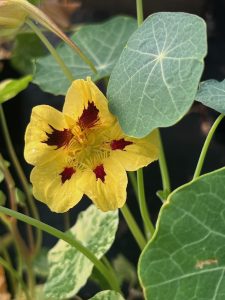
Nasturtium blooming in the greenhouse this winter at The Herb Cottage
Did you know your herbal flowers are edible? Our favorite herbs all have flowers that are colorful, flavorful and carry many medicinal gifts.
Home grown or purchased salad greens and your herb flowers are a natural combination. Using flowers from our herb plants adds nutrition and has healthy benefits.
What’s prettier than home-grown salad greens brightened up with orange Nasturtiums or purple and gold Violas? These edible herb flowers not only add to the visual aspect of a green salad, they add flavor and herbal goodness. Nasturtium flowers are peppery, while the flavors of Violas and Pansies have a flavor similar to Wintergreen.
As an added gift, Nasturtium flowers, with their peppery taste, act as a decongestant. Much like mustard or horseradish, even just one Nasturtium flower can open the sinuses and get things flowing. Violas and pansies are cooling and soothing. We use the leaves of the violet plant, especially wild violets, as tea, often mixed with other medicinal herbs.
A few cautions
There are a few cautions before you go out and start collecting flowers hither and yon. To keep their flowers looking perfect, growers in the commercial florist trade use a fair amount of herbicides and pesticides. Buy your cut flowers from a farmer’s market where you can talk to the grower. Make sure the flowers are being grown pesticide and herbicide free. Or, better yet, grow your own!
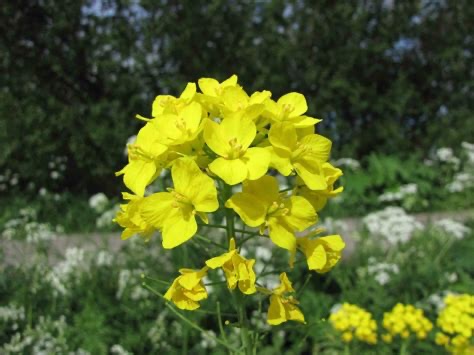
Wild Mustard Flower
If you’re foraging for wild edibles like violets, wild mustard or radish, be aware of where you are collecting. Wild mustard and radish like weedy, disturbed ground. We find them along railroad tracks and in abandoned lots in urban areas.
Wild Radish Flower
It’s best not to collect plants from along railroad tracks. And, weedy urban lots are often visited by dogs and other critters who leave behind substances you don’t want on your edibles.
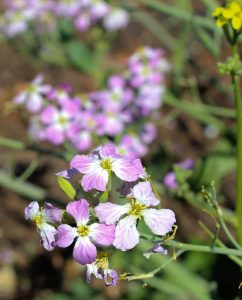
Harvesting
Our own herb gardens, yards and plants should be free of chemical pesticides and herbicides. If you use organic pest control, sea weed foliar spray or other organic products, gently wash the flowers after harvest. Otherwise, it’s best not to wash the flowers since that tends to compromise their appearance.
Harvest the flowers and leave them outdoors in the shade for an hour or two for the bugs to depart. Shake them gently to make sure all the critters have left. Then, refrigerate your flowers in a container where they have space so as not to be crushed. It’s best to use the flowers the same day you pick them.
One other caution, of course, when foraging for any plant, is to leave enough plants in the area to sustain the collection. If you’re into foraging, there are books and websites that can teach you about best practices. Look for a class or a website on foraging in your particular area.
Flowers from the Herb Garden
CHIVES
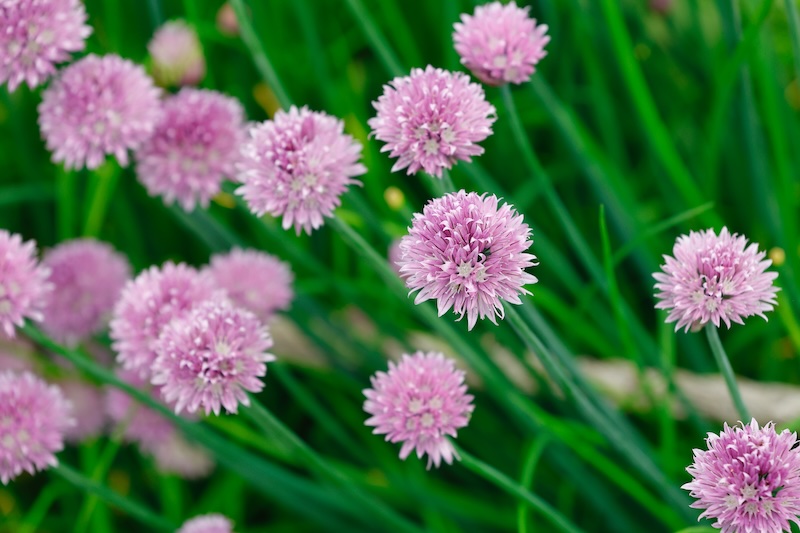
Chives grow with grass-like stalks which put out little globular pink flowers in the Spring. If you’ve never eaten chive flowers, you’re in for a surprise! The flowers are hot! Be ready for a real bite when tasting one by itself. The pink color adds a pretty touch to a green salad. Added to herb vinegar, chive flowers add a pink blush to the finished product.
Growing Chives
Chives are a little pickier than some other herbs we grow. In hot climates, they like mostly shade. In any climate, they’ll do well in part shade. Give them good organic soil that doesn’t hold too much moisture. But, they shouldn’t be kept too dry. Once they take hold, though, your chive patch will continue to grow and keep you in spicy leaves and flowers for years to come. They do well in containers, too. Just be sure to keep them watered.
Chives are tender to prolonged freezing weather, so some protection is warranted. If you live where the ground is frozen for months, treat them as an annual or grow them in containers so you can move them. They are a good candidate for indoor herb gardens since they grow well without a lot of light. They’ll bloom in the Spring when you put them back outdoors when weather permits.
Health Benefits
Chive flowers are nutritious, antibacterial and aid digestion. They contain Vitamin K, Vitamin C and Vitamin A. They also contain many minerals that are essential to good health. Eating Chive flowers is a good way to get more nutrients into your diet.
How to use Chives
The ball-like flowers are made up of little florets, so break the flowers apart to use them. Scatter them on salads, use them to garnish soups or mix them into dips. Surprise your family and guests with the taste of Chive flowers.
GARLIC CHIVES
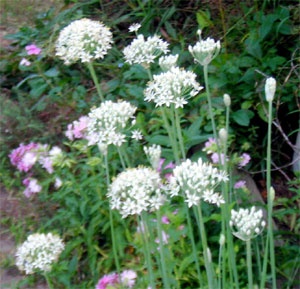
I love Garlic Chives because they are eager to grow- some folks think too eager! They do spread in the garden, so if you want to contain them, grow them in a big pot placed in the garden. The bright white, edible flowers bloom during the hottest part of the year in my Texas garden.
Growing Garlic Chives
As mentioned above, I find Garlic Chives very easy to grow. They don’t seem to be big water hogs nor do they seem affected by days of heavy rain. They also seem impervious to cold weather, especially when grown in the herb bed. As with all container grown plants, protecting them during freezing weather is recommended.
They grow in full, blazing sun in my Texas herb garden. So plant them in full sun. I even have a large container full of Garlic Chives that was given to me by a friend who was moving cross country. I plopped it down in the herb bed and there it’s stayed. The plants got a little nipped during the last hard freeze, but showed signs of new growth within a week of the weather warming up.
Garlic Chives can be easily started from seed. If you know a gardener who has some growing, they’ll more than likely be happy to dig a clump and present it to you.
The plant we call Society Garlic, Tulbaghia violacea, often grown as a drought tolerant edging rather than an herb, can be used the same way as the herb known as Garlic Chives. Society Garlic has lavender or white blossoms that grow in a loose form and are easy to distinguish from Garlic Chives.
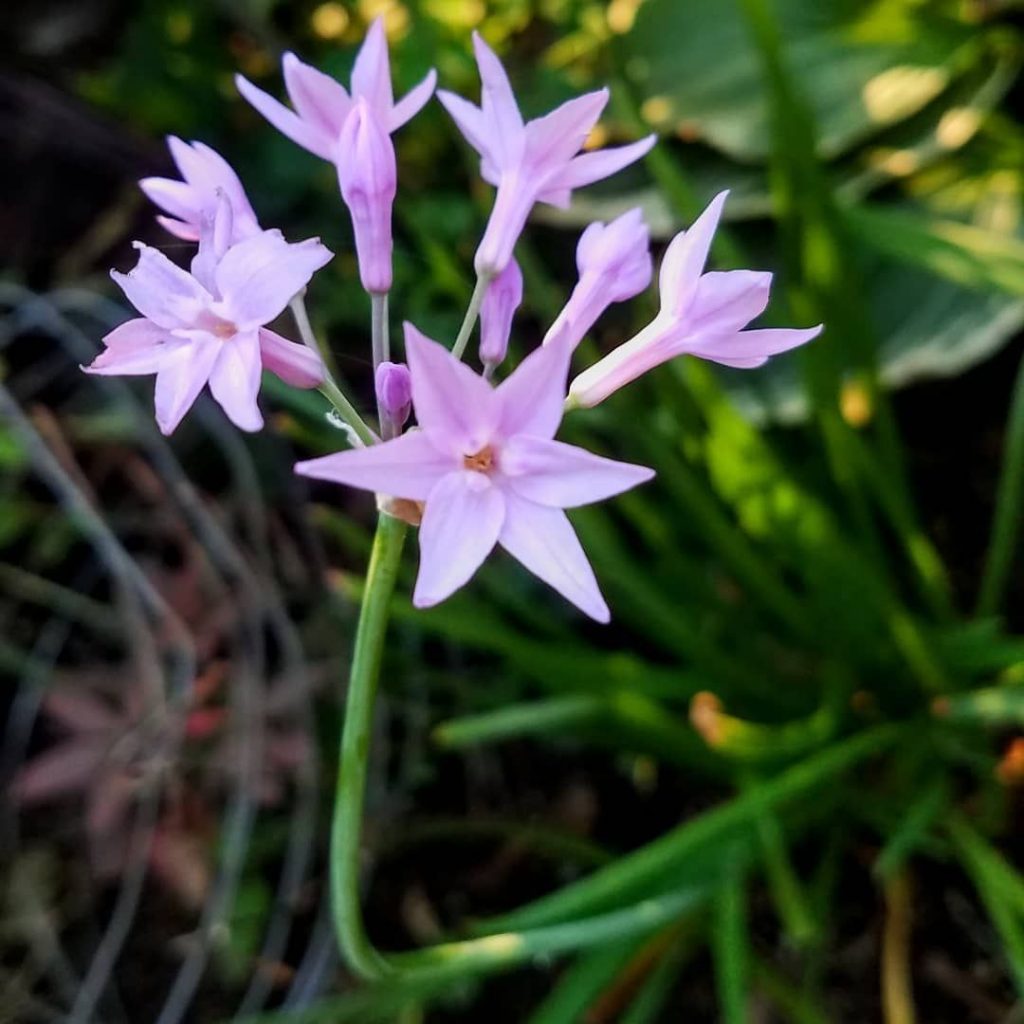
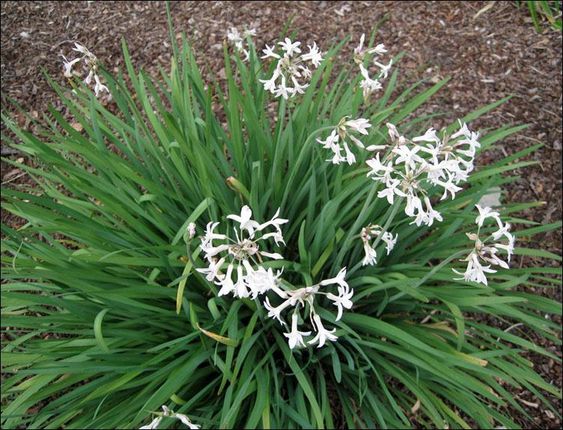
Health Benefits
The flowers are full of Vitamin C and Vitamin A, which are known anti-oxidants. Garlic Chives protect the body from damage caused by unstable cells known as “free radicals”. Regular use of anti-oxidant herbs and food keeps our body in a healthy state.
How to use Garlic Chives
Sprinkle the individual florets of Garlic Chives and Society Garlic on salads, soups, use in dips and even on sandwiches. I like Garlic Chives as an ingredient in my Savory Herb Vinegar. It adds a touch of garlic ands blends well with the other herbs.
ROSEMARY
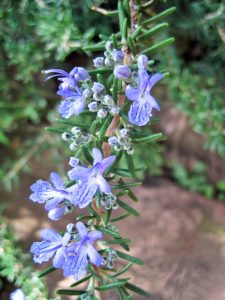
Growing Rosemary
Rosemary is an evergreen shrubby herb in areas where it is winter hardy. In other areas it grows as an annual. It is from the Mediterranean part of the world so it likes heat, survives with little water and even in rocky soils. Plant rosemary where you can walk by it every day so you can run your hand along a branch and inhale its heady aroma.
The flowers on rosemary are small, but pack a big punch. They are a little tedious to pick due to their tiny size, but the result is well worth it.
Health Benefits
The many benefits of Rosemary include its use as a bitter tonic. That may sound unappetizing, but bitters support the digestive enzymes in our digestive tract. This results in better digestion with less discomfort and better absorption of nutrients.
If you’re looking for more herbs that add nutrients to your meals, include Rosemary. It is full of calcium, iron, B Vitamins and Vitamin C.
Rosemary is known as the memory herb. It increases blood flow and is thought to help with cognition and memory. The flowers carry the same benefit as the leafy parts of the plant.
How to use Rosemary
The tiny flowers of Rosemary can be added to sandwiches, rice, salads, meat dishes and tea. A little goes a long way with Rosemary so use a light hand. You can always add more if you desire. The piney, slightly bitter and spicy taste of Rosemary will brighten almost any food.
CALENDULA
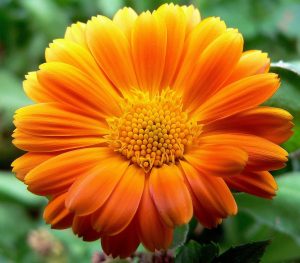
Growing Calendula
The bright orange and yellow flowers of Calendula stand out in any herb garden. There are not a lot of herbs that give us such brilliant flowers. And, the gifts Calendula brings are numerous.
In my Texas climate, Calendula is a cool season annual. It usually survives winter, so I plant it in the fall by direct seeding it in the herb garden. You an also start the seeds indoors for transplanting. One thing I love about Calendula – and I must admit there are many things I love about Calendula– is the more you pick the flowers, the more blossoms it puts on.
If you live where the summers are milder than our Texas blast furnace, you should be able to grow Calendula all summer long until the first hard freeze. Lucky you! Calendula fades in our summer heat. I say good-bye to my Calendula in May and have to wait until November before I enjoy the flowers again.
Health Benefits
Calendula is a well known herb for use in soaps. lotions and other skin care products. In a salve or infused oil it helps heal skin abrasions, rashes and chapped skin. But, the uses don’t stop there. A sprinkle of the bright petals on salads or rice add a subtle flavor, lots of color and powerful healing benefits.
If we think of Calendula as a herb that benefits the skin cells on the outside of the body, then it makes sense that it also is beneficial to the cells inside our body. Calendula is called a ‘vulnerary’ herb. That means it helps regenerate our cells more quickly. Its anti-inflammatory action works to control inflammation throughout the body.
How to use Calendula
The flower of Calendula is call a ray flower. That means it has petals that come out from a central point. We only want to use the petals of our flowers, so take the time to “shred” your Calendula flowers so you can use just the petals.
Sprinkle the bright petals on salads, soups, sandwiches. Mix them into dips. Add petals to a pot of rice before you cook it and your rice will have a lovely yellow color- like using Saffron for a fraction of the cost.
In Conclusion
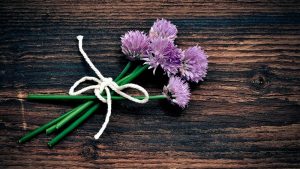
As you can see, herb flowers have many of the same flavors, health and medicinal benefits of herb leaves. The additional benefit of the attractiveness of the flowers adds to their usefulness. The visual aspect of our meals brings more of our attention to the food and makes the meal more enjoyable.
You might think because we use a small amount of herb flowers or herb leaves in our food, we aren’t getting great benefit from them. The way to get the most out of using herbs flowers and leaves is to use them on a regular basis. Think of ways to use them in at least one meal a day as long as they are available. This adds up over time. Soon your body is benefitting from all those little bits of herbal goodness found in the flowers adding minerals, vitamins and the other gifts we get from our herbs.
For a diverse and reputable supply of herb seeds, look no further than Botanical Interests. The water color drawings on the seed packs are an added benefit. You get complete germination and growing information on each seed pack from Botanical Interests.

